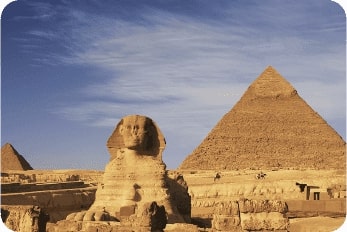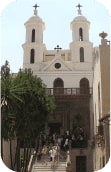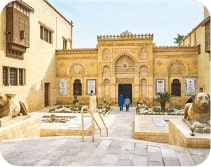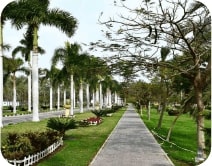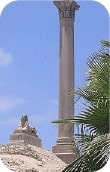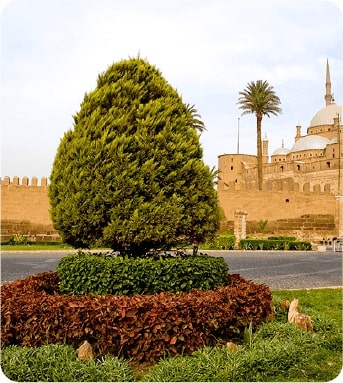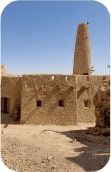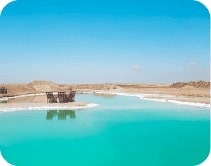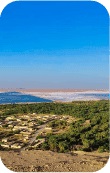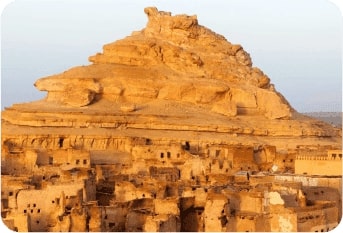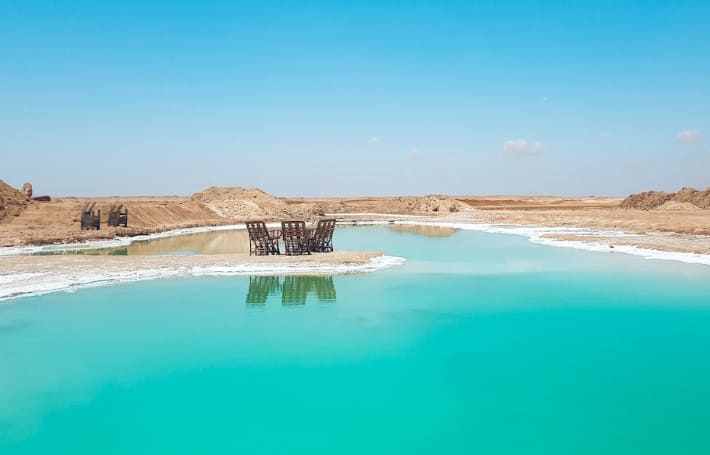





Minimum group size: 8 people

Tour price*:
3* – from $790 per person
4* – from $895 per person
5* – from $975 per person
*with accommodation in a Double Room

The Giza Pyramids

Mersa Matruh
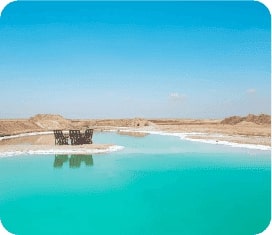
Siwa Oasis
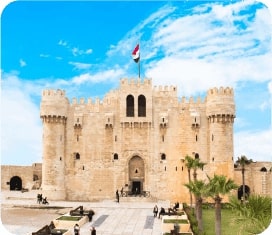
Citadel of Qaitbay
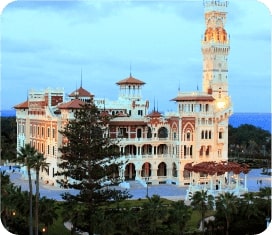
The Montaza Palace
Arrival in Cairo (preferably in the first half of the day).
Airport meeting and transfer to the hotel. Check-in at the chosen hotel.
A Nile River cruise with dinner and entertainment is the perfect way to begin a journey through Egypt. It offers an immersion into the country's atmosphere, a chance to admire the sunset over Cairo and the flavors of Egyptian cuisine, accompanied by live Arabic music and a colorful show. Guests will be dazzled by mesmerizing performances, including the male Sufi dance “tanoura” and the traditional female belly dance.
Return to the hotel.
After breakfast at the hotel, we’ll head out for an unforgettable day, beginning with a tour of the world-famous Pyramids and the Sphinx in the Giza Valley.
Travelers will see the monumental tombs of the pharaohs, including the Great Pyramid of Khufu, long celebrated as one of the Seven Wonders of the Ancient World. The Great Sphinx will also draw attention; it’s a legendary guardian of Ancient Egyptian secrets, which was carved from a single limestone rock in the shape of a colossal lion with a human face lying on the sand. This is the oldest sculpture in human history, with an estimated construction date of 2559 BCE.
Our next stop is a guided tour of Cairo, featuring the Egyptian Museum, a globally renowned repository of ancient artifacts. After lunch, we’ll explore Cairo’s historic Coptic quarter, including Babylon Fortress and the Hanging Church. The tour will also feature a visit to the Ben Ezra Synagogue, which traces its origins back to the 4th century CE.
Our journey continues at the lively Khan El Khalili Bazaar, the oldest market in Cairo, where guests can shop for unique souvenirs crafted by skilled artisans whose families have honed their crafts for centuries.
The day concludes with dinner at an Egyptian cuisine restaurant and an overnight stay at a hotel in Cairo.
After breakfast at the hotel, we’ll set off for Wadi El Natrun, a valley with 10 alkaline lakes located in northern Egypt, between Cairo and Alexandria. This area once yielded a substance used by the ancient Egyptians for the mummification process.
In Christian literature, these lands are known as the Nitrian Desert, renowned as the "Cradle of Monasticism". Here, in one of the local monasteries dedicated to Saint Mary, the famous palimpsest of the Nitrian Codex was discovered in 1842, containing, among other writings, the Gospel of Saint Luke.
Of the approximately 50 ancient Coptic Christian monasteries originally established here, only four have survived to the present. We will visit the Monasteries of Anba Bishoy and Paromeos (Baramus).
Afterward, we’ll head to Mersa Matruh (370 km away), a Mediterranean resort city and the capital of the Matruh Governorate. Known since the Ptolemaic era as Paraetonium and later renamed Paraitonion in the Byzantine period, this city became known as Baretun after the Arab conquest. A popular summer destination among residents of Cairo, it is home to numerous hotels and tourist complexes.
The evening will conclude with dinner and an overnight stay at a hotel in Mersa Matruh.
After breakfast at the hotel, we’ll set out for Siwa Oasis (306 km away).
This remarkable oasis spans an area of 82 sq. km in a deep depression that reaches −19 m below sea level. Its administrative center is the town of Shali, with a population of around 35,000. Siwa is part of the Matruh Governorate and boasts architectural sites dating back to Egypt’s 26th Dynasty (664-525 BCE), a period when Libyan-descended pharaohs ruled. The oasis was originally settled by a Berber tribe, and most of today’s inhabitants speak Siwi, a unique Berber dialect.
In medieval times, Siwa was a crossroads for caravans and once hosted a slave market. Some African slaves settled in the oasis, blending with the local population. African influence is evident today in both the appearance of the locals and their traditions. Unlike Egyptian women who wear darker garments, Siwan women favor grey-blue embroidered dresses and colorful attire during festivals. This blend of Berber, Egyptian, and African roots has created a one-of-a-kind culture among Siwa’s residents.
The town of Shali lies at the base of a hill with picturesque remnants of an ancient adobe settlement. Visitors can still see several homes and a mosque, and the ethnographic "Siwan House" museum is a highlight in Shali.
At the entrance to the oasis, there’s the Mountain of the Dead (Gebel Al Mawta). This necropolis dates back to the Late Kingdom and Greco-Roman periods, with dozens of tombs carved into the hill. Among the most notable is the tomb of Si-Amun, with a relief of a man in a white tunic and a blue ceiling adorned with golden stars.
Three kilometers from Shali lies the ancient capital of the oasis, Aghurmi. Perched atop a cliff, it houses the Temple of Amun (6th century BCE), where priests gained renown for their accurate prophecies. The oracle of the temple was one of the most famous in antiquity, and Alexander the Great came to Siwa himself to visit the temple. There the priests declared him a son of Amun and rightful ruler of Egypt.
The route from Aghurmi to Shali passes by a second, later Temple of Amun, known as Umm Ubaydah, where only one wall remains, displaying interesting reliefs. Nearby there’s a round stone pool fed by warm, mineral-rich springs, known as Cleopatra’s Baths, where, as legend has it, Cleopatra herself once bathed. Siwa boasts over 200 such springs, providing a lush environment for 300,000 date palms and 70,000 olive trees.
Beyond its historical sites, Siwa offers a unique, traditional atmosphere, largely untouched by modern civilization, along with striking natural beauty. The journey to Siwa may be long, but it’s an experience well worth the effort.
In Siwa, we will explore the Oracle Temple, Mountain of the Dead, and the old village of Siwa (Shali). Dinner and an overnight stay will be at a hotel in Siwa Oasis.
Breakfast at the hotel and the start of a day filled with adventures.
We’ll head out on a desert safari to explore the sand dunes, visit hot springs (where we'll definitely take a dip), and see the salt lake. During the desert tour, participants will enjoy a safari lunch.
Dinner and overnight stay at the hotel in Siwa Oasis.
Breakfast at the hotel and departure to Alexandria (600 km). Check-in at the hotel, followed by a sightseeing tour of Alexandria, often called a "piece of Europe in Africa". This city stands out from Cairo and the popular Egyptian resorts on the Red Sea.
Alexandria is Egypt’s second-largest city, stretching 32 km along the Mediterranean coast and serving as the administrative center of Alexandria Governorate. Founded in 332 BCE by Alexander the Great, Alexandria boasts a rich history. Once the brilliant capital of the Ptolemaic Kingdom of Egypt and a major center of the Hellenistic world, Alexandria continues to captivate travelers with its beauty.
Dinner and overnight stay at the hotel in Alexandria.
Breakfast at the hotel, followed by the second part of the Alexandria tour. This includes a visit to the famous Citadel of Qaitbay, built to defend against potential Ottoman invasions by sea. Guests will also see some of the city’s oldest architectural masterpieces, including the renowned Pompey’s Pillar.
The tour will also take visitors to the Alexandria Library and the Royal Jewelry Museum, a true work of art in itself. Finally, we’ll explore the remarkable catacombs of Kom El Shoqafa, an atmospheric and mysterious site.
Dinner and overnight stay at the hotel in Alexandria.
Breakfast at the hotel, followed by a transfer to Cairo Airport for departure.
Flight home (preferably in the afternoon).
